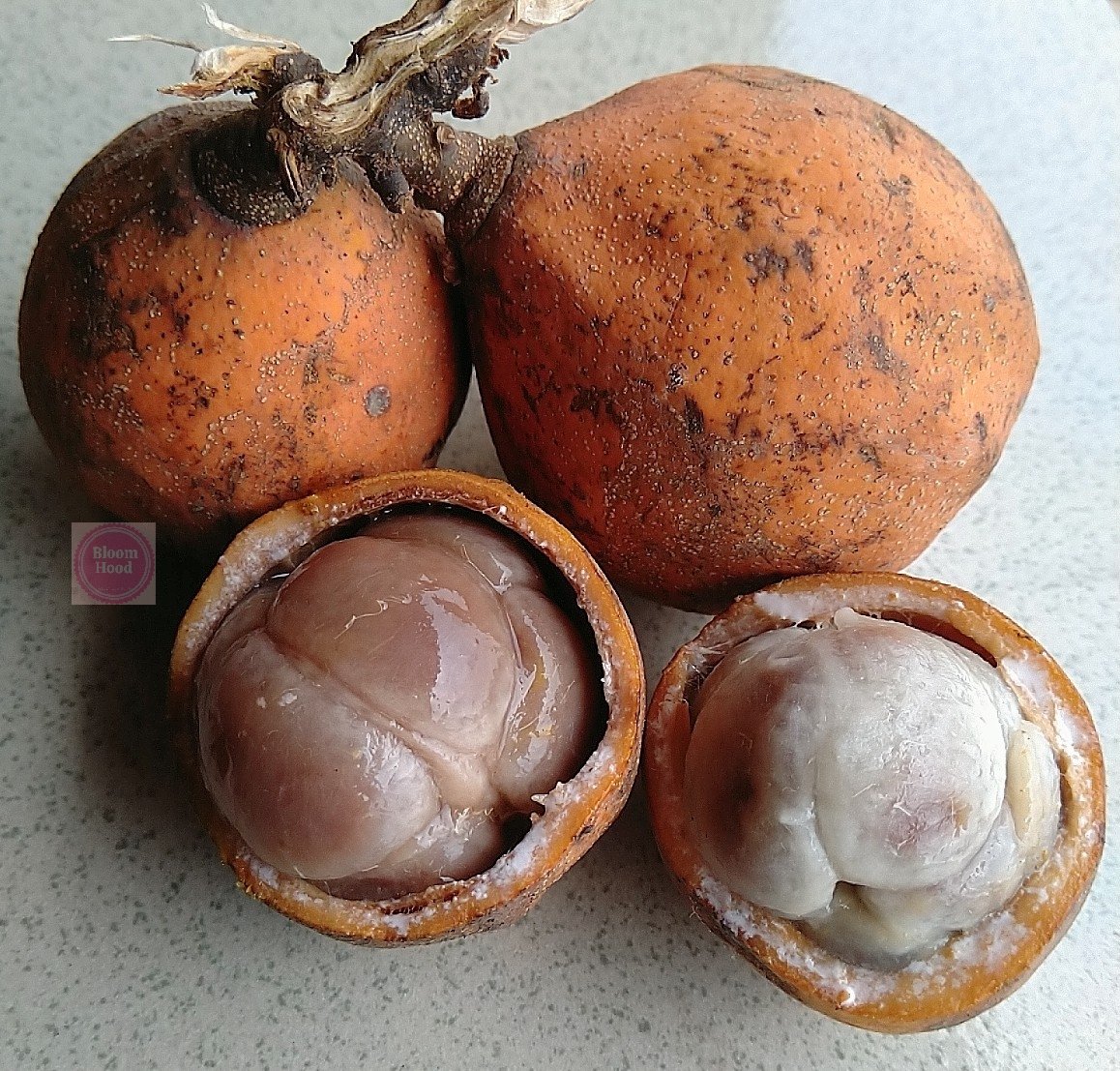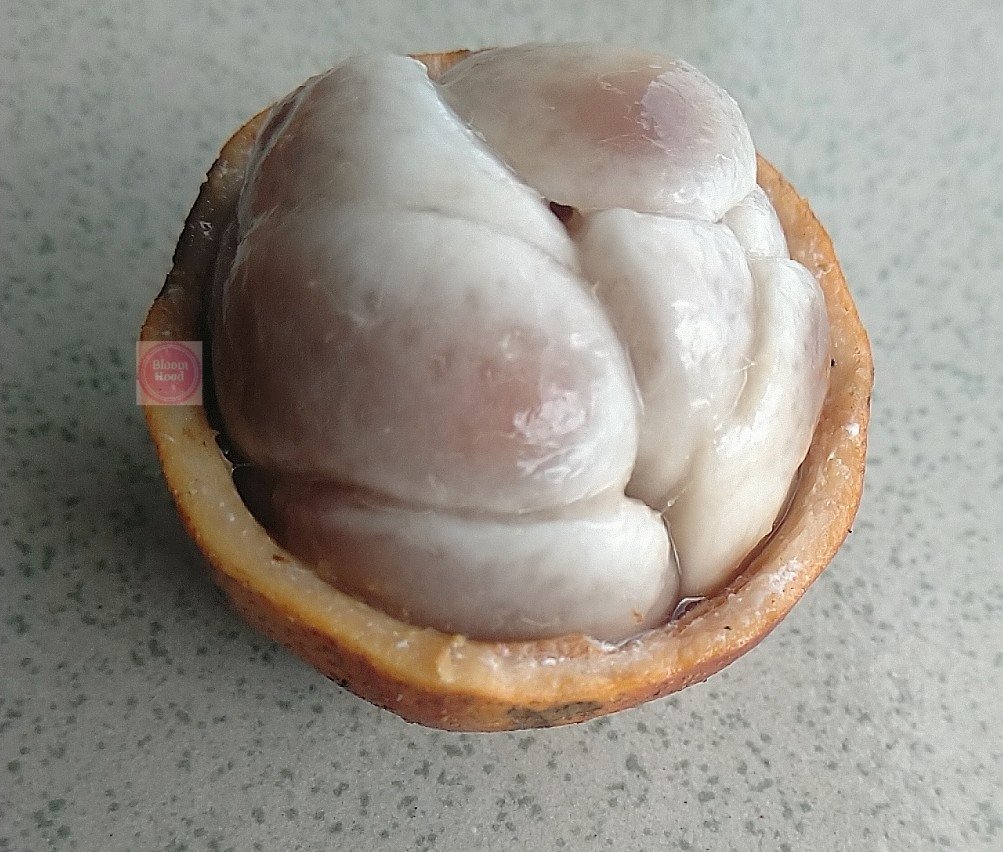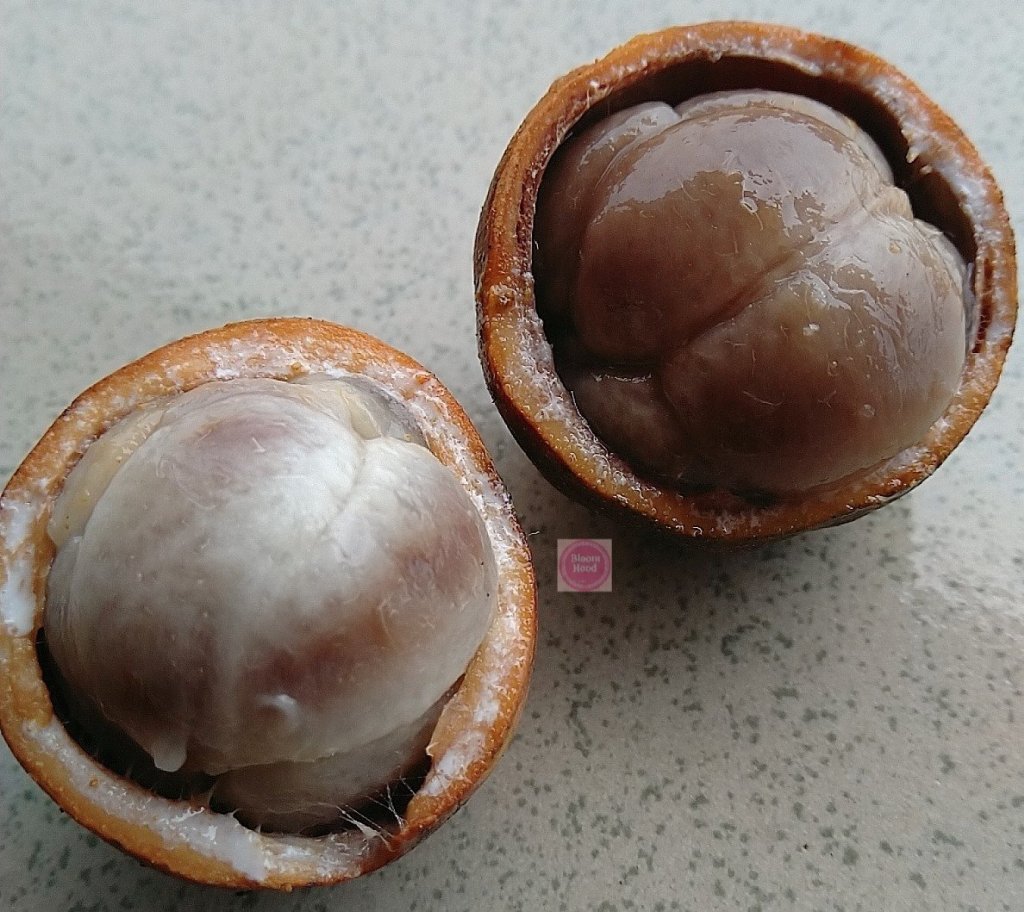Utu (botanically called landolphia owariensis and “white rubber vine” in English) is a seasonal fruit with a sweet or slightly tart taste.
It is mostly sold in clusters and is a good source of vitamins A and C.
The little bumpy rounded rind is yellow-orange. As it gets older it may have some speckles of brown colour.
The colour is a clear sign of the presence of carotenoid which gives it its colour and makes it good for the eye and overall vision health.

The seeds and pulp cling into a ball which can be easily separated by the fingers. The pulp is juicy and sweet unless you come across the one with a tart taste.
The seeds/nuts are edible too and can be chewed after licking the pulp.
Where does Landolphia Owariensis Grow?
White rubber vine (landolphia owariensis) is a shrubby, vining plant widely grown in the wild.
It is known for its sticky sap (latex), which oozes out when cut and is native to tropical West Africa only.
Unlike rubber vine (mbubgo, bungo or sapa comorensis) which is native to Madagascar and has spread across other tropical areas of Africa, like the West, East and Central Africa.
Such as Nigeria, Congo, Senegal, Comoros, Tanzania and Gambia.
There are more than 10 species of Landolphia in Africa. Some of the common varieties are;
- Landolphia owariensis (white rubber vine/Congo rubber plant)
- Landolphia heudelotii (Guinea gum vine)
- Landolphia comorensis
- Landolphia maxima etc.
Local Names for Landolphia Owariensis
In Igbo, it’s called Utu, Utu isi enyi etc. In Hausa, ciwoo, chiwo or chiyo depending on the dialects.

Note
Do not confuse this fruit with saba comorensis (the yellow pulp variety commonly called chiyo in Hausa or known as bungo/mabungo/mavhungo (Rubber Vine) ).

Even though both are from the same Apocynaceae family, they have some distinguishable features.
While saba comorensis has a yellow fruit peel and fruit pulp, landolphia owariensis has an orange fruit peel and white fruit pulp.

(brown fruit pulp isn’t uncommon too)
Also, saba comorensis is bigger than landolphia owariensis.
However, both genera are native to tropical Africa. And fruits from both species may be confusing even when the differences are quite noticeable.
Uses of Landolphia Owariensis (Utu) Plant
- The seeds are fermented into wine, beer, tangy fruits and drinks.
- It adds flavour to cereals, foods (fishes).
- In some countries, the tart fruit juice can serve in place of lime juice.
- The plant is a source of rubber. You can even see the rind covered in latex. Thus, the plant latex can be used in rubber production.
- The twigs make a good chewing stick.
- The stem is strong enough to make a good walking stick.
- The latex is used to trap smaller birds and to make an arrowhead poison when mixed with the grounded seeds of strophanthus.
- The tree had been a major source of rubber production in Nigeria and some neighbouring countries like Ghana.
Health Benefits of Landolphia Owariensis (Utu) Fruit
- The leaves, roots and stem are useful in traditional medicine for anti-microbial, purgative and vermifuge purposes.
- A) as a purgative, drink the aqueous root extract
- B) as a vermifuge, soak the bark in water and drink the resulting solution or extract. In some parts of Equatorial Guinea, latex is taken orally for this purpose.
- Also provides anti-inflammatory and analgesic properties.
- Drinking the leaves decoction may help treat malaria.
- The decoction of the bark may help repel intestinal worms.
- The root extract may help in the treatment of infections like gonorrhoea. Soak the roots in gins and take them orally.
- Is used to treat epilepsy and dizziness in some parts of Congo. Where the leaves extract is dripped into the eyes and used to wash the face too for these purposes.
- Aids in digestion.
- Leaves are boiled and applied to the sprain to ease the pain.
- Also, it can reduce the pain and conditions of oedema and rheumatism by massaging the sap on the affected areas.
- The aqueous extract of the unripe pulp and roots is used to treat fever pains and administered through a steam bath.
- All parts of the plants, from the leaves to the stems, roots, bark and twigs can help treat venereal infections. For this purpose, soak them in water and drink the extract.
Utu is not as perishable as some fruit like Bush cherry or banana. It can survive ocean travel in terms of exportation.
However, it is a seasonal fruit. But that isn’t just the problem. The problem is that, in a few decades to come, this fruit and many more of its species as well as other seasonal fruits like bush cherry, icheku, red monkey kola, yellow monkey kola etc may go extinct.


Part of my childhood my children may not experienced! This fruit is going extinct
LikeLike
It’s so sad to even think of
LikeLiked by 1 person
Yeah! A lot of things we cheerfully and graciously ate as children, are no more, development and civilization have taken them away.
LikeLike
That’s good to know
LikeLike
i have its plantation becavse it is good as goat meal.
LikeLiked by 1 person